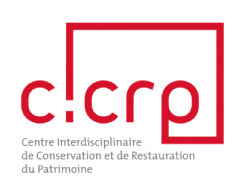Optimisation of water bath desalination
Programme start: 2011
CICRP: Philippe Bromblet (director)
Partnership(s): A-Corros (Arles); restorers: Alessandro Ingoglia, Emmanuel Desroches, Olivier Rolland, Sébastien Aze
The CICRP sought on the one hand to define specifications for water bath desalination and on the other to evaluate the possibility of using electrophoresis to optimise the effectiveness of this method.
Several restoration sites have formed the object of an in-depth follow-up to determine, with the help of restorers and architects, the main difficulties encountered in the course of water bath desalination, and to adapt this methodology accordingly. Moreover, a research internship has been created to test electrophoresis. Sections of columns highly deteriorated and contaminated by soluble salts have been used for comparative testing of desalination by static water baths and electrophoresis baths by varying the parameters (intensity of current, electrodes etc.). The results have not revealed higher effectiveness for the electrophoresis method, while confirming the reductions in pH and the attack risks to the stone in the course of the desalination by electrophoresis. Technical improvements (osmotic membranes) are being considered to improve the effectiveness of this technique.
Publications:
- Internship report of Sabrina Brunel, trainee for the Professional Degree in conservation/restoration of built heritage for Arles (Aix-Marseille University): ‘Contribution of electrophoresis to the desalination of stone by bath in terms of effectiveness and safety’.
- ‘Water bath desalination, protocols for optimisation’, ICOMOS technical day, Philippe Bromblet, communication.
- Bromblet Ph., Vergès-Belmin V., Franzen C., Aze S. and Rolland O., ‘Toward an optimization of the specifications for water bath desalination of stone objects’, Salt Weathering on Buildings and Stone Sculptures, Proceedings from the International Conference, 19–22 October 2011, Limassol, Cyprus, 2011, pp. 397–404.


